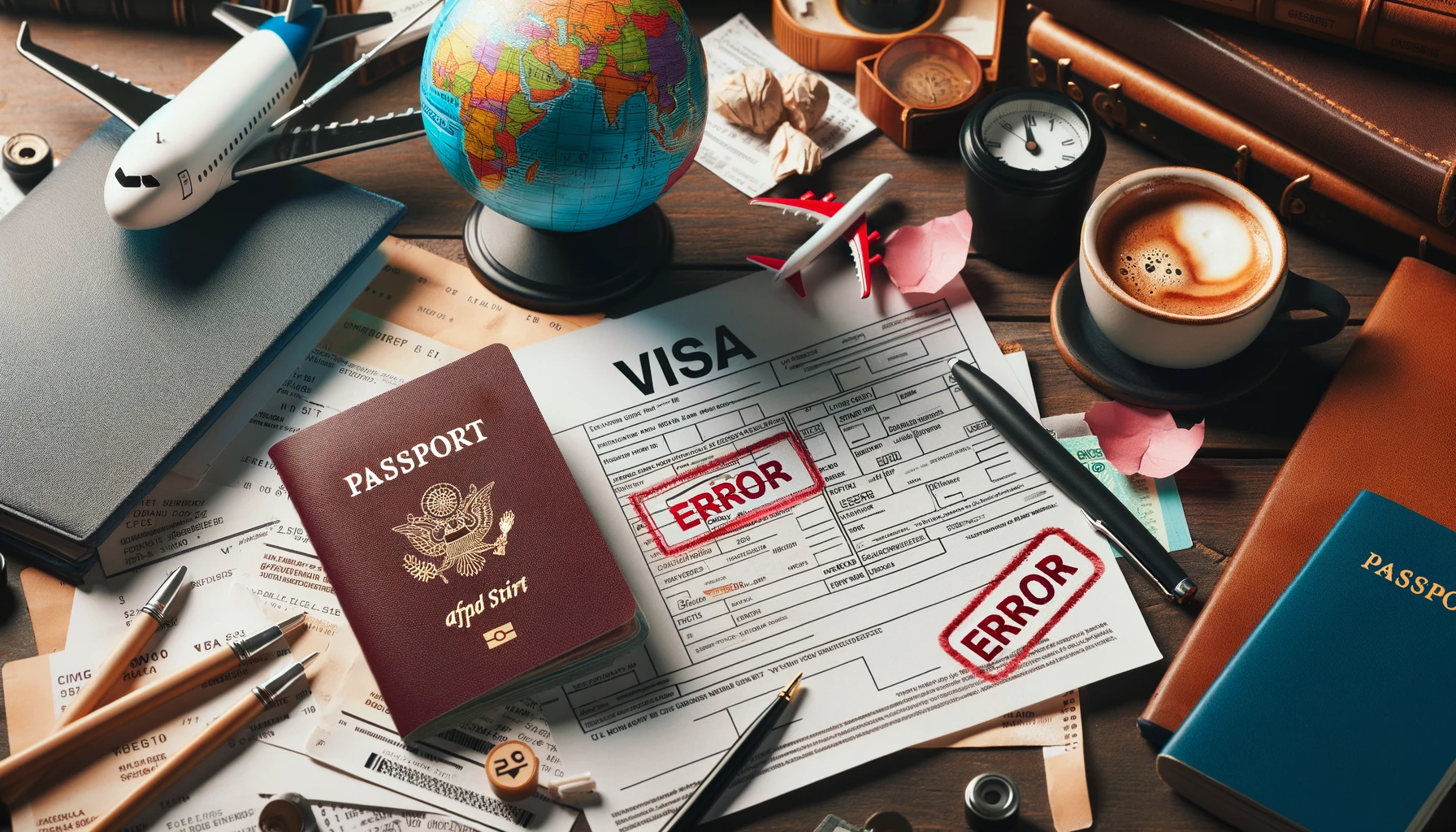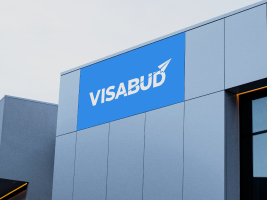Planning a trip abroad is thrilling, but getting a visa? It can be a bit like walking through a maze blindfolded. You’re excited about the adventure, but the visa process is a hurdle race with hidden traps. So, in this blog, we will discuss the 10 common mistakes that could turn your visa application journey from a smooth sail into a rollercoaster ride.
What is a Visa?
A visa is like your passport’s travel buddy. It’s an official permit that a government issues, allowing you to enter, stay, or leave a particular country for a specified period. Think of it as your key to unlocking a new country, enabling you to explore, work, study, or simply enjoy a vacation.
Every country has different rules about who can enter their borders and for how long. A visa ensures that travelers comply with these regulations, serving as a way for a country to manage and monitor who comes in and for what purpose. It’s like an agreement between you and the host country that you’ll abide by their rules during your stay.
Types of Visa Indians need while traveling
Traveling the world as an Indian passport holder can be an exciting adventure, but navigating the different types of Visas can feel a bit like figuring out a puzzle. Here are the different types of visas Indians typically need to set themselves abroad:
- Tourist Visa
- Business Visa
- Student Visa
- Work Visa
- Transit Visa
10 Common Mistakes to Avoid When Applying for a Visa
Let’s take a look at the top 10 mistakes many people make when applying for a visa:
1. Choosing the wrong category:
One of the most common mistakes in visa applications is selecting the wrong category. This error often occurs when applicants misunderstand the purpose of their travel or choose an inappropriate visa type for their intended activities in the visiting country.
For instance, if you’re planning to tour a country for leisure and exploration, selecting a business or work visa instead of a tourist visa can lead to complications. Similarly, if you intend to study abroad, choosing a tourist visa instead of a student visa might result in issues during your academic pursuits.
The key to avoiding this mistake is understanding the specific purpose of your travel and selecting the appropriate visa category that aligns with your intentions and activities during your stay in the host country. Double-checking the visa categories available and matching your purpose of travel will ensure you apply for the correct visa category, reducing the chances of unnecessary complications or rejections.
2. Many reasons to travel:
Another common mistake in visa applications is listing multiple purposes for travel without clarity or consistency. When applying for a visa, it’s essential to be clear and specific about the purpose of your visit. Mixing various reasons without a coherent explanation can lead to confusion and potential suspicion by the visa officers.
For instance, if you state that your visit is for tourism, business meetings, and exploring educational opportunities, it might raise red flags. This lack of clarity might signal uncertainty about your actual intentions or, worse, raise suspicions about potential overstays or breaches of visa conditions.
To avoid this mistake, prioritize and clearly outline the main purpose of your trip. If your visit encompasses multiple reasons, emphasize the primary purpose and provide concise, consistent explanations for secondary objectives. Being transparent, consistent, and specific in your application about the primary intent of your visit will increase your chances of a successful visa application.
3. Not sure about the duration of your trip
Another frequent mistake in visa applications is being uncertain about the duration of the trip. Applicants sometimes provide vague or conflicting information about how long they plan to stay in the host country.
Uncertainty regarding the duration of your trip can raise concerns for visa officers. It’s crucial to provide a clear and realistic timeframe for your stay. Whether it’s a short vacation, a few weeks for a business trip, or an extended period for studies or work, being ambiguous about the length of your stay can lead to doubts about your intentions or the necessity of the Visa.
To avoid this mistake, plan your itinerary in advance and have a clear understanding of the dates and duration of your stay. Provide accurate and consistent information regarding your intended arrival and departure dates in your visa application. Being specific and truthful about the duration of your trip helps visa officers evaluate the legitimacy of your visit, thereby increasing the likelihood of a successful visa application.
4. Applying for a Visa late:
A common mistake many applicants make is applying for a visa too late. Waiting until the eleventh hour to begin the visa application process can lead to unnecessary stress and complications.
Submitting your application too close to your intended travel date leaves little room for unexpected delays or additional document requirements. It might also result in the unavailability of appointments at visa application centers, especially during peak travel seasons, potentially jeopardizing your travel plans.
To avoid this mistake, it’s advisable to start the visa application process well in advance of your planned travel date. Check the processing times and requirements for the Visa you’re applying for, and ensure you have all the necessary documents ready. Applying early provides a buffer for unforeseen circumstances, allowing a smoother and less stressful visa application experience.
5. Unaware of the Visa application for different countries:
Another prevalent mistake in visa applications is not being familiar with the specific application terms and requirements of different countries. Each country has its unique visa application procedures, document requirements, and specific terms and conditions.
Failing to understand the specific regulations and conditions of the country you’re applying to can lead to errors in your application. For example, not providing the required documents, missing important deadlines, or not following specific guidelines can result in delays or even rejection of your visa application.
To avoid this mistake, thoroughly research the visa application terms and conditions for the country you plan to visit. Familiarize yourself with the specific requirements, such as necessary documents, application procedures, processing times, and any additional conditions. This understanding will ensure that you meet all the criteria and increase the chances of a successful visa application.
6. Lack of awareness among Indians
One common mistake observed among Indian applicants is a general lack of awareness about the visa application process. This lack of awareness can stem from insufficient knowledge about the specific requirements, procedures, or changes in visa policies for various countries.
With adequate information, applicants might notice crucial details or updates in visa regulations, leading to mistakes in their applications. It could result in missing essential documents, not adhering to updated guidelines, or not being aware of changes in visa procedures.
To overcome this mistake, Indian applicants must stay informed about visa requirements and policies. Regularly check official embassy websites, seek advice from experienced travelers or professionals, and ensure you are up to date with the latest information and changes in visa regulations. This awareness will significantly improve the quality and accuracy of your visa application.
7. Not trusting the professionals.
Another mistake commonly made during the visa application process is a lack of trust in seeking guidance or assistance from professionals. Some applicants might overlook the importance of consulting experts or professionals specializing in visa applications.
By not seeking guidance from professionals such as immigration consultants or visa experts, applicants may miss out on valuable insights, updated information, or strategies to enhance their application. This lack of professional advice could lead to errors or oversights that might have been avoided with expert guidance.
To rectify this mistake, consider seeking assistance from qualified professionals or experienced consultants specializing in visa applications. Their expertise can provide valuable advice, guidance on specific documentation, and insights into the intricacies of the visa application process. Trusting professionals can significantly improve the quality and success rate of your visa application.
8. Factors that affect the Visa application
When it comes to visa applications, both the personal and professional backgrounds of the applicant play a significant role in the decision-making process. Factors in the personal background might include travel history, compliance with previous visas, any instances of overstaying, or a record of following visa regulations.
On the professional front, factors such as employment history, the stability of the job, the purpose of the visit in relation to the applicant’s profession, and the potential for the individual to return to their home country after the trip are considered. A stable job, a clear purpose for travel related to one’s profession, and an assurance of returning home are often important considerations in the visa decision-making process.
Understanding and presenting a strong personal and professional background in a visa application is crucial. It involves demonstrating a consistent and clear record, aligning the purpose of the visit with professional commitments, and illustrating strong ties to the home country to assure the visa authorities of the intent to return after the visit. This understanding can significantly impact the success of the visa application.
9. Applying for multiple countries at once
Another common mistake in visa applications is applying for visas to multiple countries simultaneously. While it might seem efficient to tackle several travel plans at once, applying for visas to multiple countries concurrently can raise concerns for the visa authorities.
Submitting applications to various countries simultaneously might signal conflicting or unclear travel intentions. It could imply that the applicant is unsure of their travel plans or might not have a clear-cut agenda for their visits.
To avoid this mistake, it’s advisable to prioritize and sequence your visa applications. Begin with the country you intend to visit first or where the primary purpose of your trip lies. Once you’ve secured the necessary Visa, you can then proceed to apply for visas to other countries in your itinerary. This approach ensures clarity in your travel plans and demonstrates a focused intent for each visa application, increasing the likelihood of a successful outcome.
10. Unaware of the document, and they are not ready on time.
The final common mistake in visa applications is being unaware of the required documents and not having them prepared. Inadequate knowledge about the necessary paperwork or being unprepared for the essential documents can lead to delays or denials in the visa application process.
Not having the right documents ready might result in last-minute scrambling, leading to incomplete applications or the submission of incorrect or outdated information. This could significantly hinder the application process and potentially result in rejection.
To avoid this mistake, thoroughly research and understand the specific documents required for the visa application. Ensure that you have all the necessary paperwork well in advance of the application submission. This includes passport copies, identification, financial statements, travel itineraries, letters of invitation (if applicable), and any other documents specified by the country’s visa requirements. Being well-prepared with the correct and complete documentation will streamline the application process and increase the chances of a successful visa approval.
Conclusion
And there you have it! Navigating the visa application maze becomes a whole lot easier when you know the common stumbling blocks to avoid. Choosing the right category, being clear about your plans, having your documents sorted, and starting early are your secret weapons. So, gear up, get prepared, and set sail on your travel dreams. Remember, a smooth visa journey means you’re one step closer to those amazing adventures.
Get in touch with to for easy visa process!






